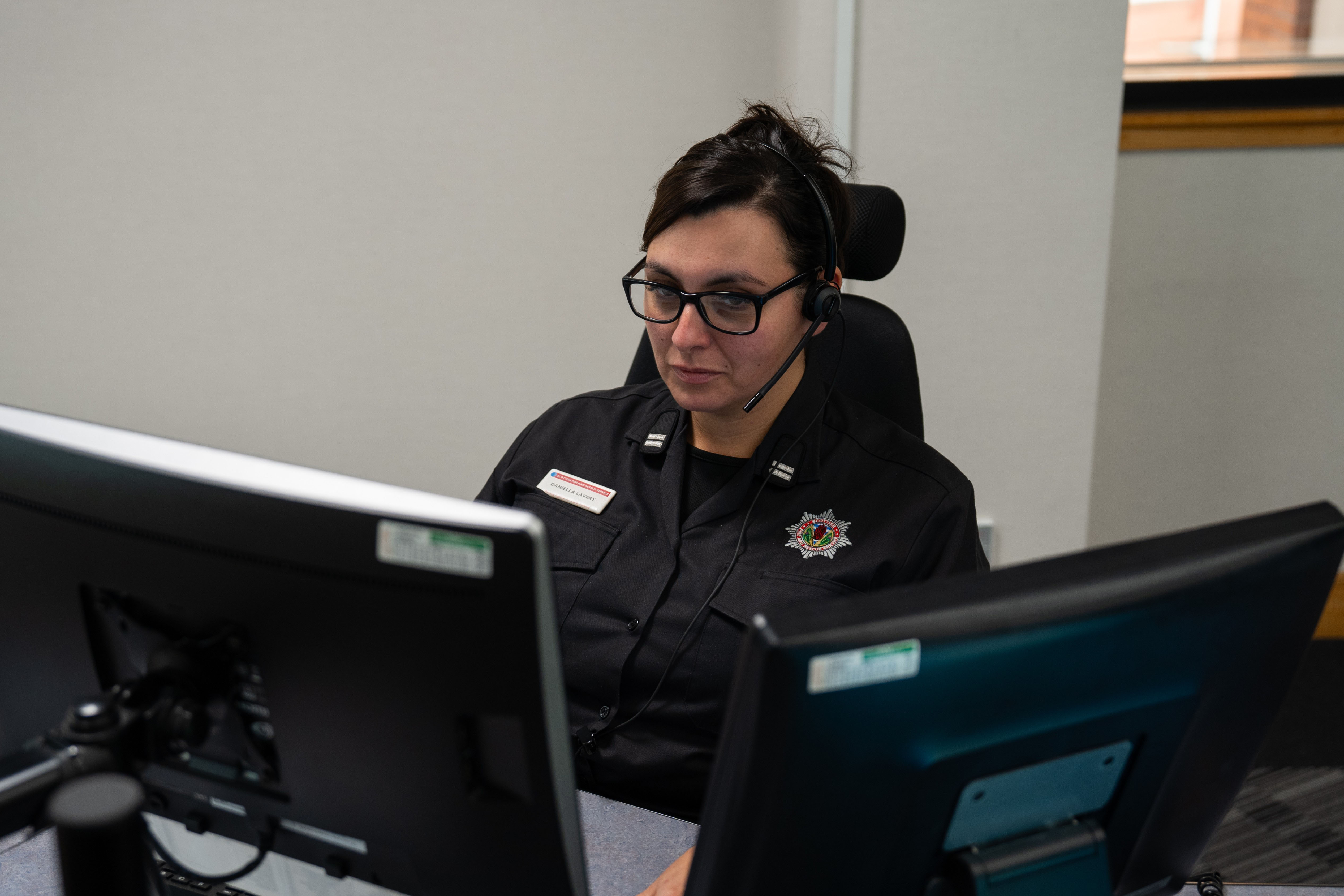The world of public safety —an intricate web of police, fire, and emergency medical services— is built on the bedrock of Computer-Aided Dispatch (CAD) systems. For decades, traditional CAD systems have served to orchestrate life-saving efforts, as they are the central nervous system of any emergency response organisation, translating a call for help into a coordinated, multi-faceted response.
CADs minimize the time it takes to get critical information from the caller to the dispatcher and then to the first responder. A seamless flow of data, from the initial call to the final report, is the primary purpose of a public safety software suite.
These systems, often deployed on-premise, were monolithic giants, powerful but rigid. In this post, we will analyse the evolution of the CAD platform and the similarities and differences between a CAD platform and the dispatch console.
The Traditional CAD Platform
Traditional CAD systems typically follow a client-server architecture. Dispatchers used dedicated workstations to interact with a central server that housed the database and the application business logic (viz., operational rules/policies). This architecture, while effective, presented several challenges. The on-premise setup requires significant capital investment in hardware and a dedicated team of IT professionals for maintenance and support. Upgrades were a major undertaking, often requiring downtime and extensive testing to ensure compatibility.
That era of CAD was heavily focused on a few core functionalities: call taking (integrated optionally), dispatching, and resource management (viz., tracking). The systems were designed to handle high volumes of voice communications and incident data entry, prioritising speed and reliability above all else. They were often tied to specific radio technologies, such as TETRA and P25, and relied on a direct (physical) connection to the communication network (viz., radios). This required special accessories to facilitate communication between private and public infrastructure.
The Citizen-to-PSAP (Public Safety Access Point) communication works frequently over public infrastructure. The Dispatcher-to-Field Responders communication always works on private infrastructure.
While the terms are often used interchangeably, it’s important to differentiate between a CAD platform and dispatch consoles, as they are distinct systems with different, yet complementary, roles in emergency response. They are not the same thing, and they perform different, though deeply integrated functions.
CAD Platform vs. Dispatch Console: Key Differences
The CAD Platform (the brain): A CAD platform is an incident management system in the traditional architecture. Its core purpose is to manage units and resources. A unit is an abstract concept within the CAD system representing a physical resource, such as a police car, a fire truck, or an ambulance. The CAD platform tracks the status of these units —whether they’re available, en route, or on-scene— and their location using Automatic Vehicle Location (AVL) data. The dispatcher uses the CAD platform to create an incident, assign a unit to it, and track the incident’s lifecycle. It is the central database and workflow engine for all emergency response data.
The Dispatch Console (the voice): A dispatch console, on the other hand, is a communication control system. Its primary function is to provide the dispatcher with a hardware and/or software interface to control the organisation’s radio network.
Dispatch Consoles are essentially device configuration managers for the radio network. They allow the dispatcher to select specific radio talk groups, manage voice channels, and patch different radio systems together. The dispatch console has no concept of an “incident” or a “unit” in the way a CAD system does; it is concerned only with the radio devices and the channels they are configured to use.
It is concerned only with the radio devices and the channels they are configured to use. Since the dispatch console used to manage only one type of data (voice communications), any data sharing between the dispatcher and field responders had to be managed manually.
Today, the two systems work together seamlessly. The CAD platform tells the dispatcher what unit to dispatch, and the dispatch console gives the dispatcher the means to communicate that command to the field unit via the radio network.
The Evolution of the CAD Platform: From Voice-Centric to Data-Driven
As public safety communication networks evolved, so did the role of the CAD platform. The need for more than just voice communication became apparent. Traditional internal communications for dispatchers and field responders used private, mission-critical networks (viz., Tetra/Astro) i.e., dedicated infrastructure. These networks were tightly integrated with the traditional CAD system, voice being the primary mode of communication between dispatchers and field responders. The dispatcher’s decision-making relied heavily on voice updates and manual data entry into the CAD system.
The traditional units (physical resources) are now equipped with more sensors, bringing an influx of data (from GPS coordinates to criminal records), and the traditional CAD system has begun to evolve to accommodate it. This evolution (communication network, devices) changed the underlying public safety operating mechanism from voice-centric to data-centric processes.
Emergency calls should preferably be based on voice communications where possible, given that it is generally quicker and safer to share information this way – if connection or context is lost during a chat, the call taker might not immediately realise they’ve lost critical information, unlike a voice call, which provides immediate audible feedback.
Integrating Voice and Data – The Platform, App Era
Data Applications on Narrowband Networks: Narrowband networks predominantly used for voice have enabled simple data applications like GPS tracking, text messaging, and telemetry. The traditional CAD platform incorporates data from these applications, allowing dispatchers to see unit locations on the map.
The Migration to Broadband and the IP-ification of Networks: The migration to broadband networks (Public/Private 4G/5G) standardised internal communications on the IP protocol.
This network migration is driven by software-centric technologies that changed the means of communication, infrastructure. This is a critical step that separates the communication platform from the data platform.
Now, with IP-based networks, the communication channel has become a transport layer for diverse data sources. This separation allows the CAD platform to evolve from a mere data entry system to a sophisticated orchestrator of information from multiple, previously siloed, sources. The size and scale of data platforms/applications vary depending on the communication network (narrowband vs. broadband ) and the public safety infrastructure available. The traditional CAD system’s inputs from the field are predominantly voice, but with the evolution of broadband, manual inputs are automated through a diverse set of data applications, gaining efficiencies by replacing human interactions with automated queries to a system/database.
This migration to broadband doesn’t mean all data is sent using a single, mission-critical network (dedicated/shared). For cost, performance, and reliability optimisation, data sources could be categorised as critical or non-critical, and leverage an appropriate infrastructure.
Critical Data: This includes mission-critical voice (MCPTT), high-priority alerts, and safety-critical video streams (viz., drones, etc.). It uses a dedicated, secure, and highly reliable mission-critical network. To optimize the TCO (Total Cost of Ownership), a combination of public/private infrastructure can be leveraged.
Non-Critical Data: This includes video streams (fixed or mobile) for situational awareness, large file transfers (e.g., SOPs), and other less time-sensitive information. This data can be offloaded to a non-prioritised or shared network, reducing costs and preventing congestion on the critical network. This allows the data platform to ingest a diverse range of data from new sources (leveraging the next-generation sensor technologies) without compromising the integrity of mission-critical voice and data communications.




